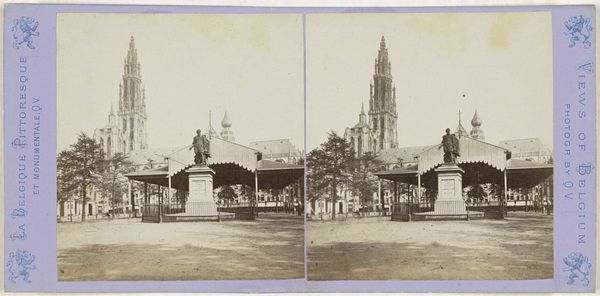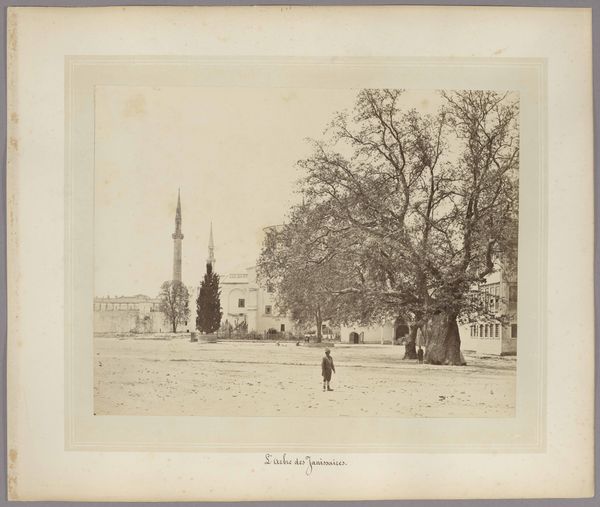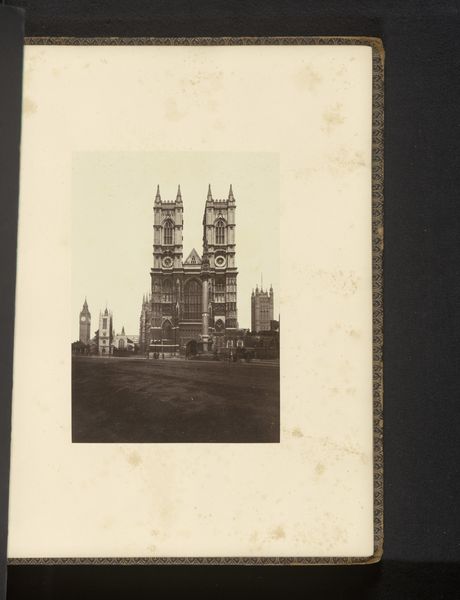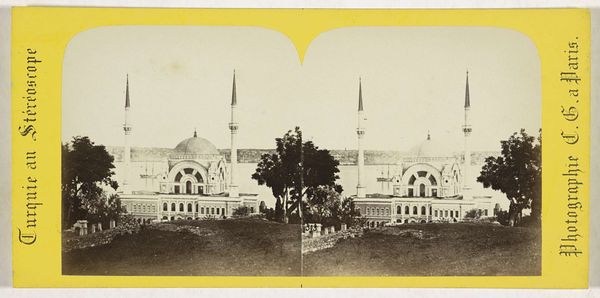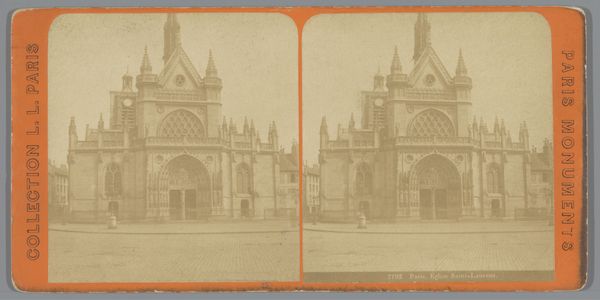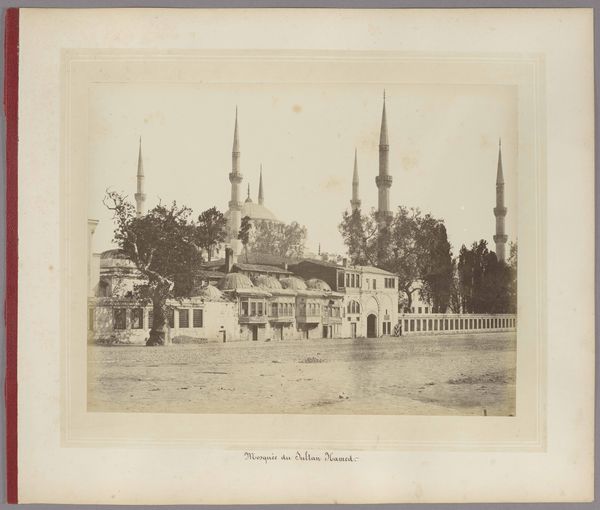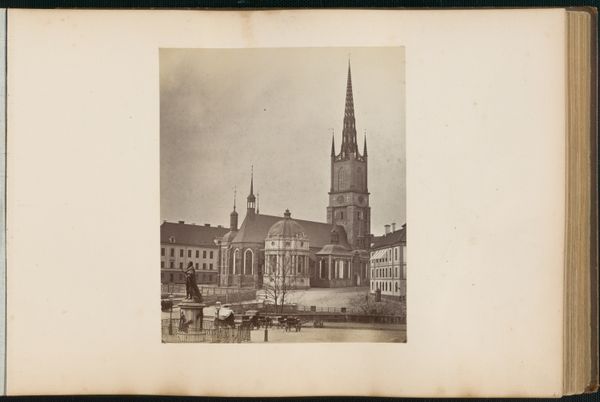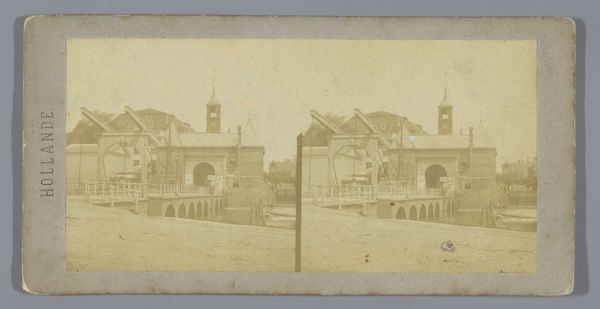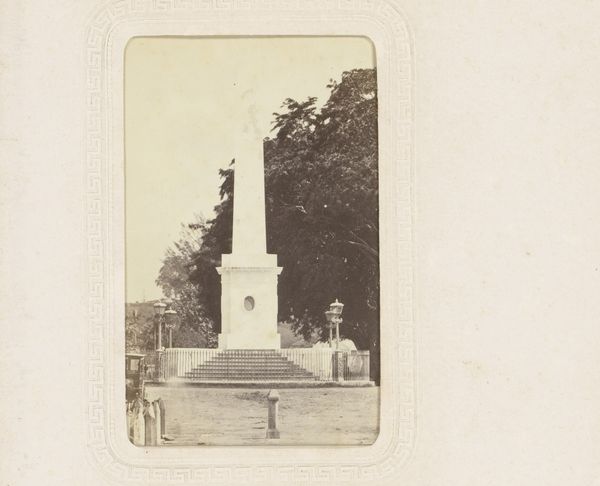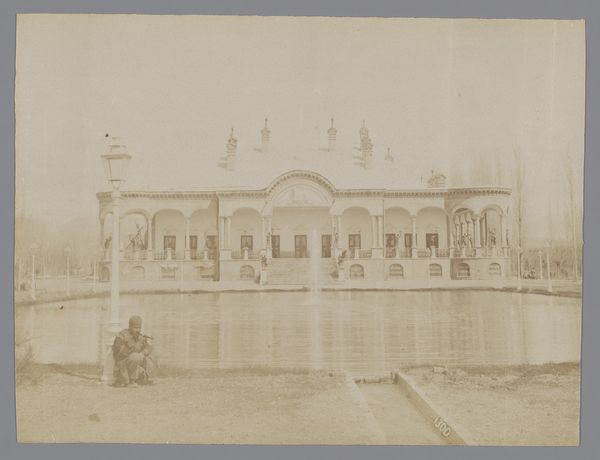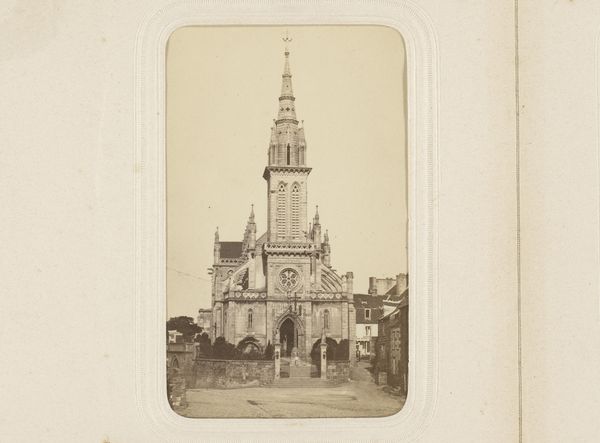![[Group of 8 Early Stereograph Views of British Monuments, Memorials, and Tombs] by Lennie](/_next/image?url=https%3A%2F%2Fd2w8kbdekdi1gv.cloudfront.net%2FeyJidWNrZXQiOiAiYXJ0ZXJhLWltYWdlcy1idWNrZXQiLCAia2V5IjogImFydHdvcmtzLzRlZDYzMzVjLWEwYWUtNGM0Zi04NmQzLTA5N2ZiNzcxZDk1MC80ZWQ2MzM1Yy1hMGFlLTRjNGYtODZkMy0wOTdmYjc3MWQ5NTBfZnVsbC5qcGciLCAiZWRpdHMiOiB7InJlc2l6ZSI6IHsid2lkdGgiOiAxOTIwLCAiaGVpZ2h0IjogMTkyMCwgImZpdCI6ICJpbnNpZGUifX19&w=3840&q=75)
[Group of 8 Early Stereograph Views of British Monuments, Memorials, and Tombs] 1850 - 1919
0:00
0:00
print, photography
# print
#
landscape
#
photography
#
realism
Dimensions: Mounts approximately: 8.4 x 17.1 cm (3 5/16 x 6 3/4 in.) to 8.5 x 17.8 cm (3 3/8 x 7 in.)
Copyright: Public Domain
Editor: So, this is a stereo photograph, "Group of 8 Early Stereograph Views of British Monuments, Memorials, and Tombs," dating roughly between 1850 and 1919. It feels quite formal and distant to me, depicting what looks like a monument. How would you interpret this work? Curator: I see a fascinating interplay between mass production, accessibility, and the monumental. Stereographs were, of course, a form of popular entertainment, mass-produced and widely consumed. But here, the subject is monuments, traditionally symbols of elite power and memory. How does the process of mass reproduction affect the way people engaged with concepts of nationhood and history? Editor: That's interesting! I hadn't thought about the tension between the accessibility of the image and the traditional inaccessibility of what it depicts. Were these monuments generally for the working class? Curator: Good question! It's unlikely the working class were the focus. These monuments were more aligned with aristocratic or civic identity. Yet, by being photographed and disseminated, the monuments were commodified and brought into the domestic sphere, accessible to anyone with a stereoscope. What does it mean to have symbols of power brought into the home, decontextualized, and consumed as a form of entertainment? Does this empower or pacify the masses? Editor: So, the act of photography transforms a physical site of national memory into a tangible object of leisure. That definitely changes the social dynamic, doesn't it? Curator: Exactly! Think about the labor involved, from the photographers and printers to the distributors and the families buying them. How did this network of labor and consumption shape national identity? Editor: Wow, I didn't consider that. It reframes my understanding, thinking of this photo not just as an image but as a product deeply embedded in material processes and class structures. Thanks! Curator: My pleasure. I, too, am glad to see the ways photography can affect concepts of nationhood, history, and identity in our current cultural landscape.
Comments
No comments
Be the first to comment and join the conversation on the ultimate creative platform.

